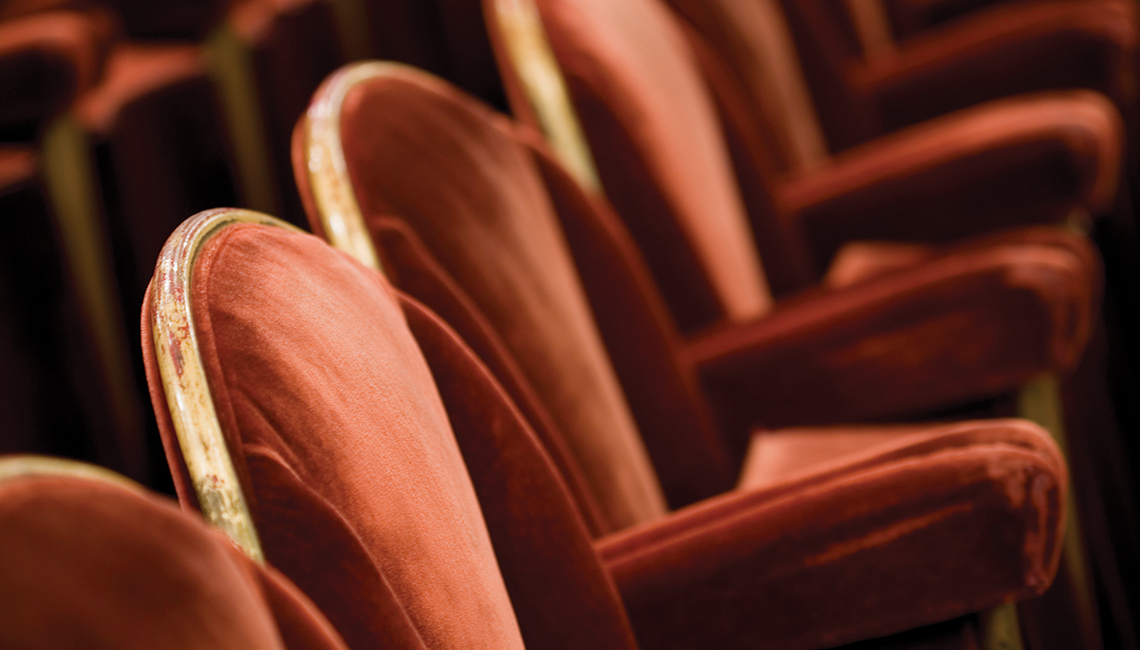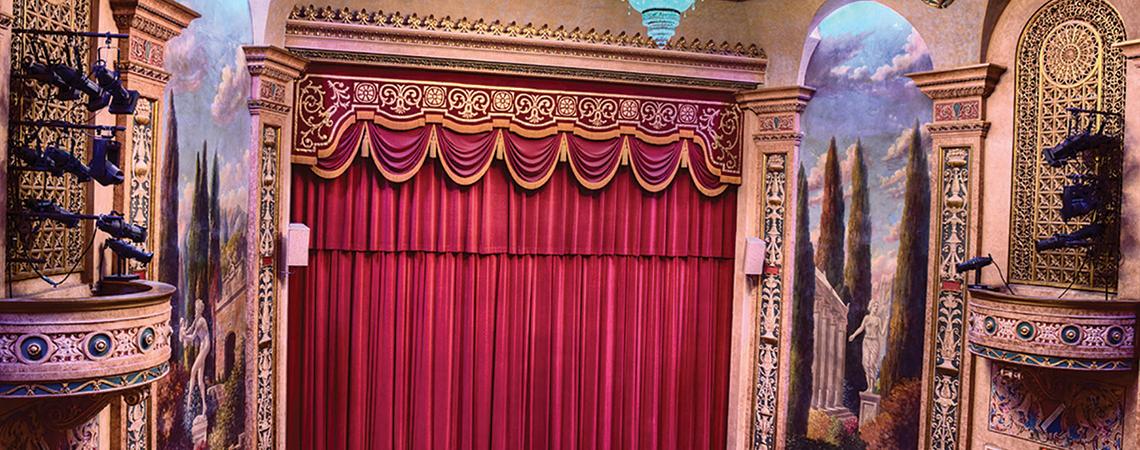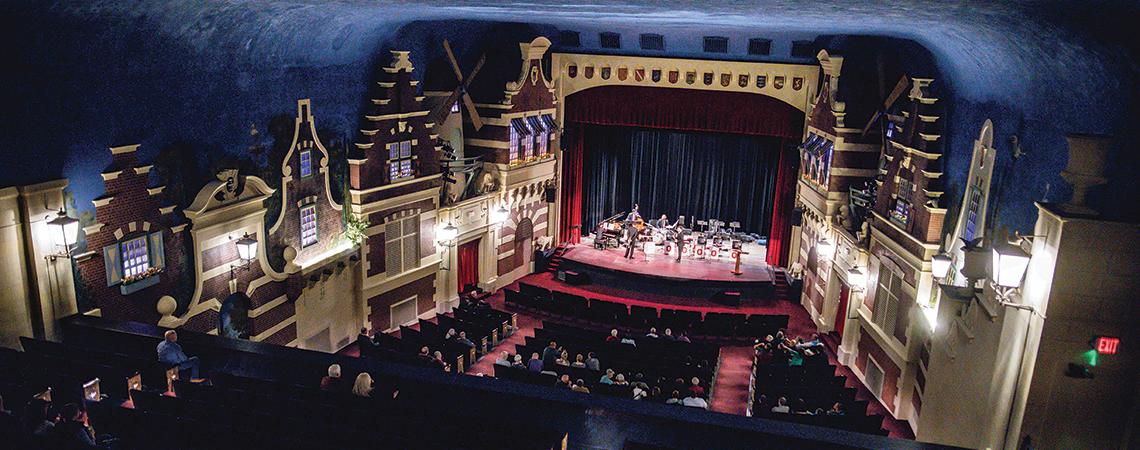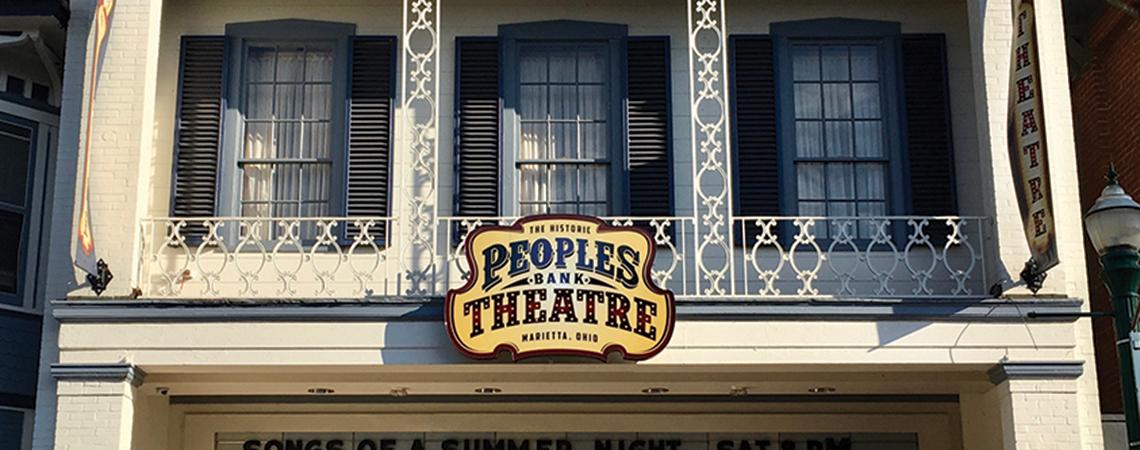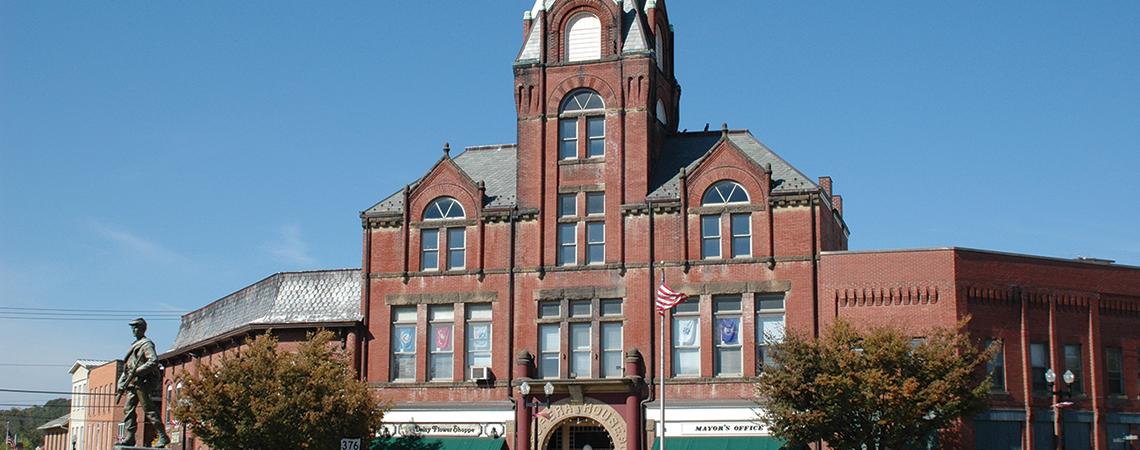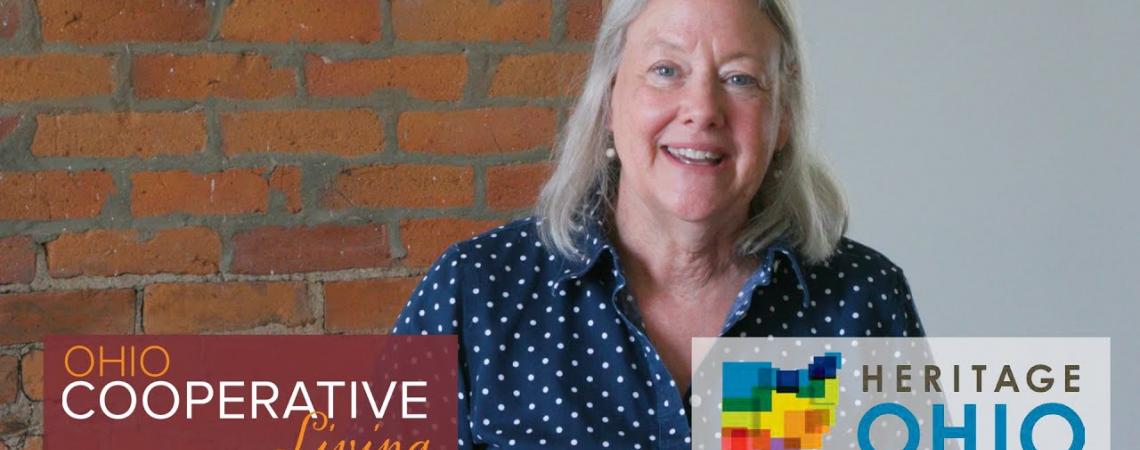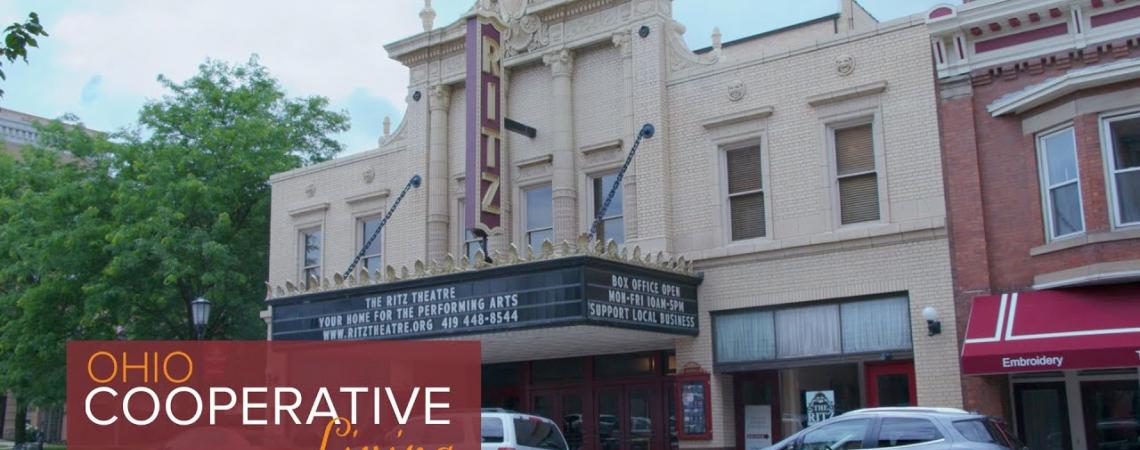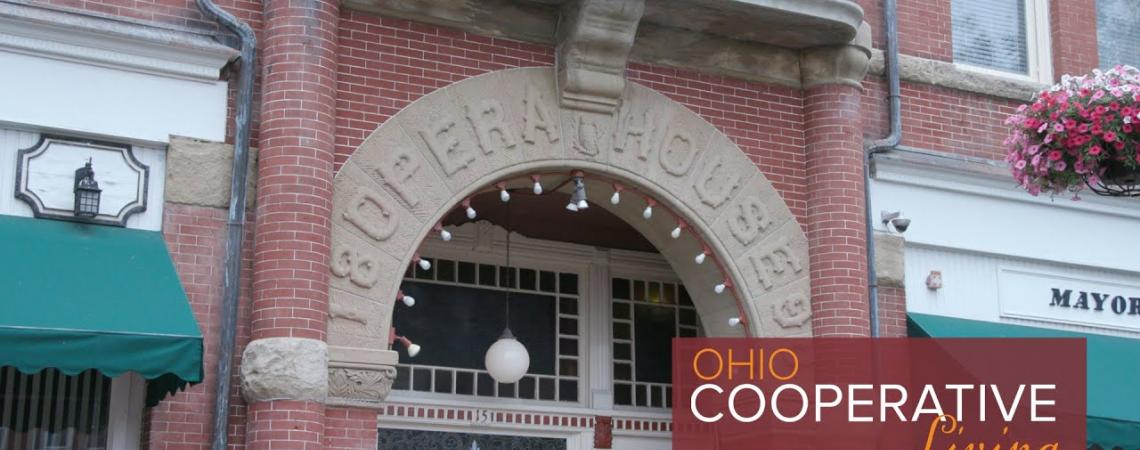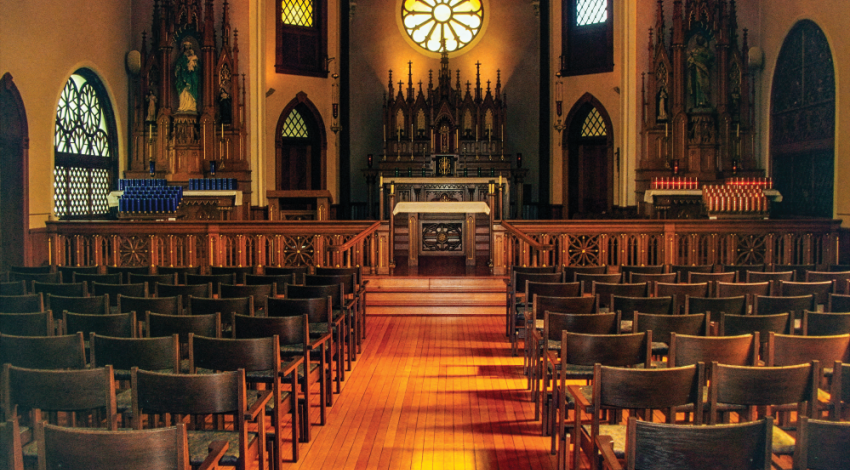Ghosts in McConnelsville. Windmills in Bellefontaine. A Venetian courtyard in Tiffin. Fleur-de-lis flourishes in Marietta.
These are the designs, décor, and delightful lore woven into the vaudeville-era theaters still found in towns across Ohio. The atmospheric theaters were built as opulent palaces for “talkies” and traveling shows in the 1920s and ’30s, when the theaters boasted bright marquees, extravagant lobbies, and exotic designs.
“Atmospheric theaters were all the rage, designed to transport the audience to glamorous or magical places,” says Joyce Barrett, executive director of Heritage Ohio.
The Ritz Theater in Tiffin was purchased at a sheriff’s auction and saved from demolition. It has since undergone a $6.6 million renovation.
The theaters’ ornate interiors mimicked Italian piazzas and art deco architecture, Grecian ruins, and Spanish courtyards. They often created the sense of being outdoors, with painted clouds and twinkling electric “stars.”
Many of the extravagant theaters eventually fell into disrepair as downtown venues were abandoned in favor of shopping mall-based cinemas, while others met their demise in the form of a wrecking ball.
Many, however, have been rescued. “Smaller communities are rediscovering these jewels in their midst and are returning them to their historic grandeur,” says Barrett. Here are a few notable examples:
The Ritz Theatre, Tiffin
In 1928, small-town Tiffin had 18,000 people and a whopping four downtown theaters luring audiences to a night at the movies. With 1,500 seats, the Ritz Theatre was called “the quarter-million-dollar theater,” designed as a modern marvel unlike any other.
“The Ritz was built in the Italian Renaissance style, making visitors feel like they were outside a beautiful villa in Venice,” says Michael Strong, executive director. “Getting all dressed up and going to the movies was the thing to do.”
Today, the Ritz is the only one of the four vaudeville-era theaters still standing. It operated as a movie house until the 1970s, when big-screen cinemas opened. Destined to be torn down, it was purchased at a sheriff’s auction for $35,000 and continued to show an occasional movie. Tiffin’s local theater association later mounted a capital campaign, and in 1998, the Ritz was treated to a $6.6 million renovation.
“An addition was constructed, the stage rebuilt, fire exits and new carpet added, and the ornate murals restored,” Strong says. Bread dough was ingeniously used to clean the aging paintings. “Think of playing with Silly Putty. Workers used a ball of soft, sticky bread dough to carefully lift the old dirt off the surface of the paintings.”
Holland Theatre, Bellefontaine
The Holland Theatre is the only atmospheric theater in America that mimics a quaint, 17th-century Dutch village. Opened in 1931, it was adorned with brick-and-timber facades of buildings, two working windmills (which still creak a bit as they turn), tulip-filled window boxes, a starry sky, and even a cloud machine.
It was a group of sixth graders who got the ball rolling to save the Holland when it closed in the 1990s, recalls teacher Kris Swisher, now president of the theater board. “The students knew they could make the community aware of the theater’s fate,” she says. “They created a ‘Step Up and Save the Holland’ program, organized a parade, and produced a play called As the Windmill Turns.” The community came together, and Logan County Landmark Preservation was formed.
Armed with a grant and the community fundraising campaign, the board commenced a top-to-bottom renovation that was in full swing by April 2019. Just six months later, the theater reopened its doors with a packed-house concert by Judy Collins.
“Everything was repaired, revived, and repainted — down to each brick,” says Swisher. “It was a huge effort to restore this community asset, bringing new energy to our thriving downtown.”
Peoples Bank Theatre, Marietta
Originally called the Hippodrome, Marietta’s vaudeville house opened in 1911. Destroyed by fire a few years later, it reopened in 1919 with 1,200 seats, a huge stage for Broadway-style plays, a giant silver screen, an orchestra pit, and an early version of geothermal air conditioning. In its heyday, it hosted stars like Boris Karloff, Kitty Wells, Sonny James, and Ernest Tubb.
Over the years, the theater changed hands (and names) several times. Most recently, a $7.5 million restoration project returned the landmark to its former glory. It reopened as Peoples Bank Theatre in 2016.
“Amazingly, no photos exist of the interior of the theater prior to 1949,” says Hunt Brawley, executive director of the French Revival-inspired venue. “But an original mural of an alpine mountain scene, discovered on the fire curtain suspended above the proscenium, was used as the template for the renovation.”
Today, the theater offers upper-end touring shows, major concerts, movies, and more. “Marietta is a historical gem, and the town has a nice tourism aspect to it,” Brawley says. “The theater just enriches our visitors’ experiences.”
Twin City Opera House, McConnelsville
Television crews from Sweden recently contacted Twin City Opera House in hopes of producing a paranormal program there. The Swedish show is just one of the ghost-hunting programs intrigued by the theater’s fabled spirits, which include a giggling 10-year-old, a man stabbed in the ballroom in the early 1900s, and a “shadow man” who lurks by an alley doorway. But has Adam Shriver, executive director, ever encountered any ghosts?
“No,” he admits, “but then I try to avoid putting myself in any position where I might.”
The theater has been in continuous operation since 1892, when traveling shows arrived by riverboat. Over the years, it has presented everything from vaudeville and movies to concerts and commencements. Last fall, a $900,000 restoration project facilitated a host of structural, electrical, and decorative upgrades.
Shriver, who grew up in the small southeastern Ohio town, remembers going there as a kid. He says McConnelsville’s rather isolated location makes it the perfect place for the entertainment venue. “We’re the county seat, but we’re at least a half hour from bigger towns like Athens, Marietta, and Zanesville,” he says.
Sitting prominently on the town square, the opera house “is on the precipice of McConnelsville’s renaissance,” he adds, where the historic and walkable downtown is a big draw for residents and visitors … and perhaps some pesky spirits.
